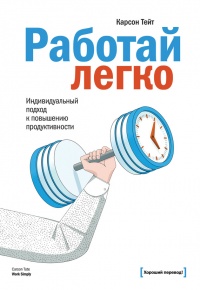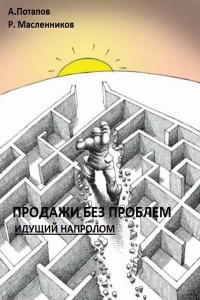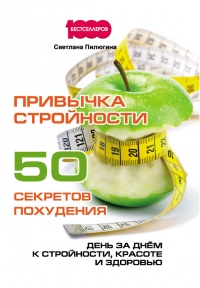Книга Скажи бессоннице нет. Путь к продуктивности, успеху и здоровью - Крис Винтер
Шрифт:
Интервал:
Закладка:
7. Roehrs, T., M. Hyde, B. Blaisdell, et al. “Sleep Loss and REM Sleep Loss аre Hyperalgesic.” Sleep 29, no. 2 (2006): 145–51.
8. Vanini, G. “Sleep Deprivation and Recovery Sleep Prior to a Noxious Inflammatory Insult Influence Characteristics and Duration of Pain.” Sleep 39, no. 1 (2016): 133–42.
9. Van Cauter, E., and G. Copinschi. “Interrelationships between Growth Hormone and Sleep.” Growth Hormone & IGF Research 10, suppl. B (2000): S57–62.
Глава 5
1. Gray, S. L., M. L. Anderson, S. Dublin, et al. “Cumulative Use of Strong Anticholinergic Medications and Incident Dementia.” JAMA Internal Medicine 175, no. 3 (2015): 401–7.
Глава 6
1. An., H., and S. A. Chung. “A Case of Obstructive Sleep Apnea Syndrome Presenting As Paradoxical Insomnia.” Psychiatry Investigations 7, no. 1 (2010): 75–78.
2. Case, K., T. D. Hurwitz, S. W. Kim, et al. “A Case of Extreme Paradoxical Insomnia Responding Selectively to Electroconvulsive Therapy.” Journal of Clinical Sleep Medicine 4, no. 1 (2008): 62–63.
3. Ghadami, M. R., B. Khaledi-Paveh, M. Nasouri, and H. Khazaie. “PTSD-Related Paradoxical Insomnia: An Actigraphic Study Among Veterans with Chronic PTSD.” Journal of Injury and Violence Research 7, no. 2 (2015): 54–58.
Глава 7
1. Kleitman, N. “Periodicity.” Sleep and Wakefulness. University of Chicago Press, 1963.
2. The International Classification of Sleep Disorders: Diagnostic and Coding Manual. Revised. Westchester: American Academy of Sleep Medicine, 2001.
3. Liira, J., J. Verbeek, and J. Ruotsalainen. “Pharmacological Interventions for Sleepiness and Sleep Disturbances Caused by Shift Work.” Journal of the American Medical Association 313, no. 9 (2015): 961–62.
Глава 8
1. Kouider, S., T. Andrillon, L. S. Barbosa, et al. “Inducing Task-Relevant Responses to Speech in the Sleeping Brain.” Current Biology 24, no. 18 (2014): 2208–14.
2. Chang, A. M., D. Aeschbach, J. F. Duffy, and C. A. Czeisler. “Evening Use of Light-Emitting eReaders Negatively Affects Sleep, Circadian Timing, and Next-Morning Alertness.” Proceedings of the National Academy of Science USA 112, no. 4 (2015): 1232–37.
3. Drake, C., T. Roehrs, J. Shambroom, and T. Roth. “Caffeine Effects on Sleep Taken 0, 3, or 6 Hours before Going to Bed.” Journal of Clinical Sleep Medicine 9, no. 11 (2013): 1195–1200.
4. Afaghi, A., H. O’Connor, and C. M. Chow. “High-Glycemic-Index Carbohydrate Meals Shorten Sleep Onset.” American Journal of Clinical Nutrition 85, no. 2 (2007): 426–30.
5. Grigsby-Toussaint, D. S., K. N. Turi, M. Krupa, et al. “Sleep Insufficiency and the Natural Environment: Results from the US Behavioral Risk Factor Surveillance System Survey.” Preventive Medicine 78 (2015): 78–84.
6. Yetish, G., H. Kaplan, M. Gurven, et al. “Natural Sleep and Its Seasonal Variations in Three Pre-Industrial Societies.” Current Biology 25, no. 21 (2015): 2862–68.
7. Raymann, R. J., D. F. Swaab, and E. J. Van Someren. “Skin Deep: Enhanced Sleep Depth by Cutaneous Temperature Manipulation.” Brain 131, part 2 (2008): 500–13.
Глава 9
1. Harvey, A. G., and N. Tang. “(Mis)Perception of Sleep in Insomnia: A Puzzle and a Resolution.” Psychological Bulletin 138, no. 1 (2012): 77–101.
2. Hofer-Tinguely, G., P. Achermann, H. P. Landolt, et al. “Sleep Inertia: Performance Changes after Sleep, Rest and Active Waking.” Cognitive Brain Research 22, no. 3 (2005): 323–31.
3. Mednick, S., T. Makovski, D. Cai, and Y. Jiang. “Sleep and Rest Facilitate Implicit Memory in a Visual Search Task.” Vision Research 49, no. 21 (2009): 2557–65.
4. Trauer, J. M., M. Y. Qian, J. S. Doyle, et al. “Cognitive Behavioral Therapy for Chronic Insomnia: A Systematic Review and Meta-Analysis.” Annals of Internal Medicine 163, no. 3 (2015): 191–204.
Глава 10
1. Van Someren, E. J., C. Cirelli, D. J. Dijk, et al. “Disrupted Sleep: From Molecules to Cognition.” Journal of Neuroscience 35, no. 14 (2015): 13889–95.
2. Alapin, I., C. S. Fichten, E. Libman, et al. “How Is Good and Poor Sleep in Older Adults and College Students Related to Daytime Sleepiness, Fatigue, and Ability to Concentrate?” Journal of Psychosomatic Research 49, no. 5 (2000): 381–90.
3. Morin, C. M. Insomnia. New York: Guilford Press, 1996.
4. Thorpy, M., and S. F. Harris. “Can You Die of Insomnia?” [blog post]. New York Times, June 24, 2010.
Глава 11
1. Weintraub, K. “Do Sleeping Pills Induce Restorative Sleep?” [blog post]. New York Times, December 11, 2015; well.blogs.nytimes.com/2015/12/11/ask-well-do-sleeping-pills-induce-restorative-sleep/?_r=0.
2. Costello, R. B., C. V. Lentino, C. C. Boyd, et al. “The Effectiveness of Melatonin for Promoting Healthy Sleep: A Rapid Evidence Assessment of the Literature.” Nutrition Journal 13 (2014): 106.
3. Sutton, E. L. “Profile of Suvorexant in the Management of Insomnia.” Drug Design, Development and Therapy 9 (2015): 6035–42.
Глава 12
1. Chung, S. A., T. K. Wolf, and C. M. Shapiro. “Sleep and Health Consequences of Shift Work in Women.” Journal of Women’s Health 18, no. 7 (2009): 965–77.
Глава 13
1. Riedel, B. W., and K. L. Lichstein. “Insomnia and Daytime Functioning.” Sleep Medicine Reviews 4, no. 3 (2000): 277–98.
2. Lewith, G. T., A. D. Godfrey, and P. Prescott. “A Single-Blinded, Randomized Pilot Study Evaluating the Aroma of Lavandula augustifolia as a Treatment for Mild Insomnia.” Journal of Alternative and Complementary Medicine 11, no. 4 (2005): 631–37.
3. Lytle, J., C. Mwatha, and K. K. Davis. “Effect of Lavender Aromatherapy on Vital Signs and Perceived Quality of Sleep in the Intermediate Care Unit: A Pilot Study.” American Journal of Critical Care 23, no. 1 (2014): 24–29.
4. Léger, D., E. Roscoat, V. Bayon, et al. “Short Sleep in Young Adults: Insomnia or Sleep Debt? Prevalence and Clinical Description of Short Sleep in a Representative Sample of 1004 Young Adults from France.” Sleep Medicine 12, no. 5 (2011): 454–62.
5. Bayon, V., D. Leger, D. Gomez-Merino, et al. ”Sleep Debt and Obesity.” Annals of Medicine 46, no. 5 (2014): 264–72.
6. Sallinen, M., J. Holm, K. Hirvonen, et al. “Recovery of Cognitive Performance from Sleep Debt: Do a Short Rest Pause and a Single Recovery Night Help?” Chronobiology International 25, no. 2 (2008): 279–96.
7. Broussard, J. L., K. Wroblewski, J. M. Kilkus, and E. Tasali. “Two Nights of Recovery Sleep Reverses the Effects of Short-term Sleep Restriction on Diabetes Risk.” Diabetes Care 39,no. 3 (2016): 40–41.
Глава 14
1. Honsberg, A. E., R. R. Dodge, M. G. Cline, and S.

























